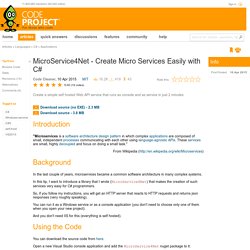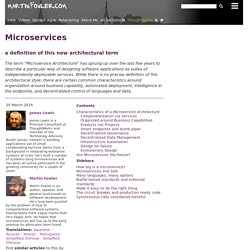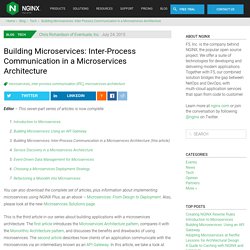

Project Athens – Aaron Schlesinger. Howdy everyone!

I want to drop a note about Project Athens. I’ll be writing more about the project in the future, but this is just a quick start. A lot of us Gophers know that vgo (soon to be integrated into the go toolchain) is a thing now. There’s been tons of discussion and debate about it. There’s some tension right now too, but I’ll leave that for another post. Whatever else is going on, we’re all working to make dependency and package management better for the Go community. Project Athens is a big part of the improvements, but it’s young and I want to introduce it to folks. Remember when go-bindata disappeared from Github and then reappeared under someone else’s account? Athens solves them by storing and serving packages outside of Github.
In our world now, Github is both the dev platform and the CDN. Moar Details! When your dependencies change on you, you’re gonna have a bad time. So far the best way to prevent all that from happening is to check in your vendor directory. The building blocks of software. Does each microservice really need its own database? The short answer is yes.

However, before you start hyperventilating about the cost of all those extra Oracle licenses, lets first explore why it is essential to do this and then discuss what is meant by the term ‘database’. The main benefit of the microservice architecture is that it dramatically improves agility and velocity. That’s because when you correctly decompose a system into microservices, you can develop and deploy each microservice independently and in parallel with the other services.
In order to be able to independently develop microservices , they must be loosely coupled. Microservices architecture. MicroService4Net - Create Micro Services Easily with C# Introduction From Wikipedia ( Background In the last couple of years, microservices became a common software architecture in many complex systems.

In this tip, I want to introduce a library that I wrote (MicroService4Net) that makes the creation of such services very easy for C# programmers. So, if you follow my instructions, you will get an HTTP server that reacts to HTTP requests and returns json responses (very roughly speaking). Microservices in C# Part 1: Building and Testing. Enterprise Integration Patterns - Return Address. Microservices: It’s not (only) the size that matters, it’s (also) how you use them – part 3. Enterprise Integration Patterns - Message. An enterprise has two separate applications that are communicating via Messaging, using a Message Channel that connects them.

How can two applications connected by a message channel exchange a piece of information? Package the information into a Message, a data record that the messaging system can transmit through a message channel. Thus any data that is to be transmitted via a messaging system must be converted into one or more messages that can be sent through messaging channels. Related patterns: Canonical Data Model, Command Message, Document Message, Event Message, Message Channel, Message Expiration, Message Sequence, Messaging, Request-Reply Want to track what happened since the book came out? REST and MQTT: Yin and Yang of Micro-Service APIs. It seemed that the worst was over – I haven’t heard a single new portmanteau of celebrity names in a while (if you exclude ‘Shamy’ which is a super-couple name of Sheldon and Amy from The Big Bang Theory but being a plot device, I don’t think it counts).

Then when I researched for this blog post I stumbled upon project QEST, a mashup of MQTT and REST. Et tu, Matteo Collina? What Matteo did in the project QEST is an attempt to bridge the world of apps speaking REST and the world of devices speaking MQTT with one bilingual broker. I find the idea intriguing and useful in the context of the IoT world. However, what I am trying to achieve with this post is address the marriage of these two protocols in the context of micro-service-based distributed systems. Microservices. "Microservices" - yet another new term on the crowded streets of software architecture.

Although our natural inclination is to pass such things by with a contemptuous glance, this bit of terminology describes a style of software systems that we are finding more and more appealing. We've seen many projects use this style in the last few years, and results so far have been positive, so much so that for many of our colleagues this is becoming the default style for building enterprise applications. Sadly, however, there's not much information that outlines what the microservice style is and how to do it. In short, the microservice architectural style [1] is an approach to developing a single application as a suite of small services, each running in its own process and communicating with lightweight mechanisms, often an HTTP resource API.
These services are built around business capabilities and independently deployable by fully automated deployment machinery. Building Microservices: Inter-Process Communication. Editor – This seven‑part series of articles is now complete: You can also download the complete set of articles, plus information about implementing microservices using NGINX Plus, as an ebook – Microservices: From Design to Deployment.

Also, please look at the new Microservices Solutions page. This is the third article in our series about building applications with a microservices architecture. The first article introduces the Microservices Architecture pattern, compares it with the Monolithic Architecture pattern, and discusses the benefits and drawbacks of using microservices. The second article describes how clients of an application communicate with the microservices via an intermediary known as an API Gateway. Introduction In a monolithic application, components invoke one another via language‑level method or function calls. Later on we will look at specific IPC technologies, but first let’s explore various design issues. Interaction Styles Defining APIs Evolving APIs IPC Technologies.